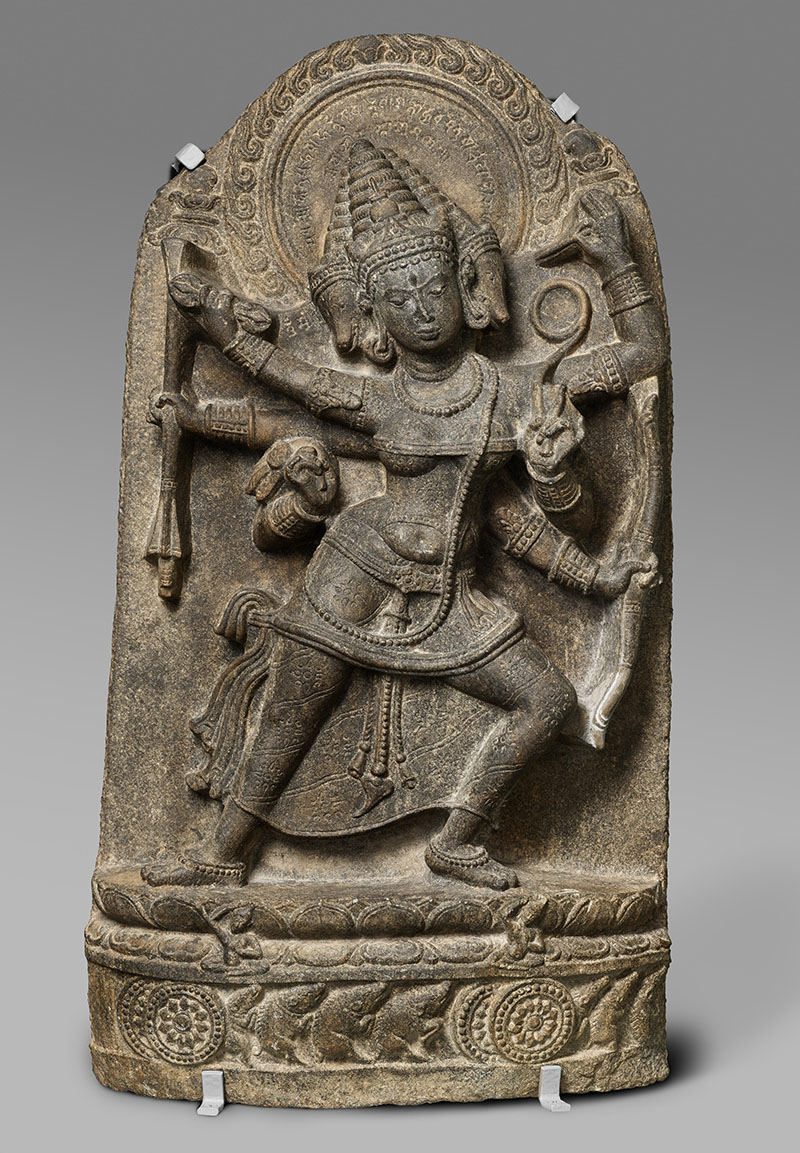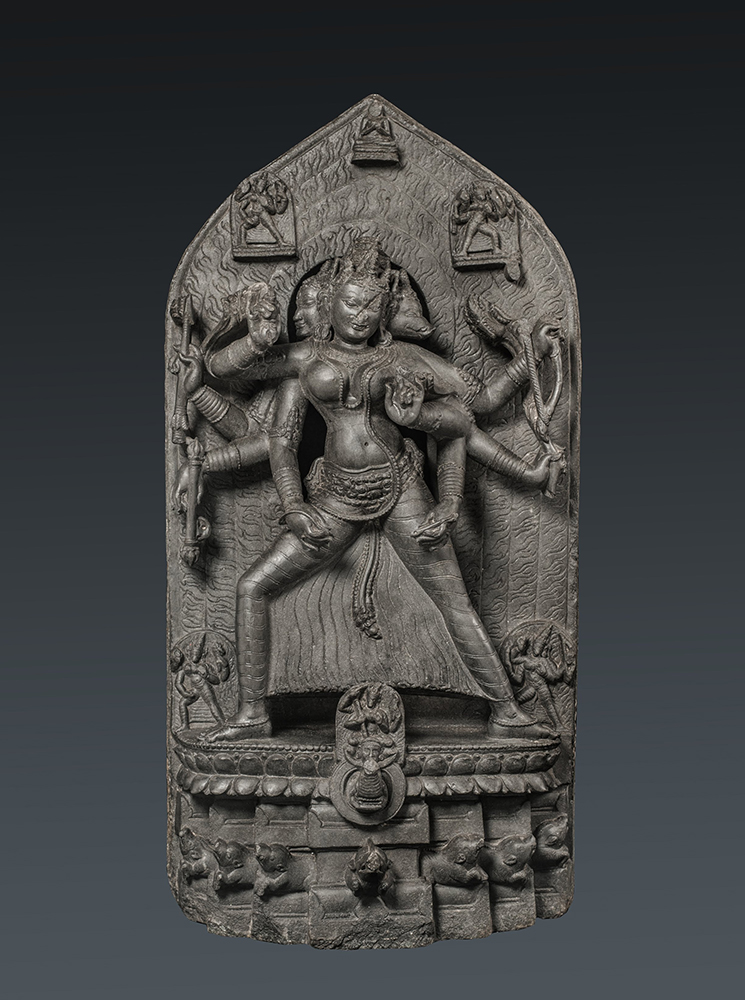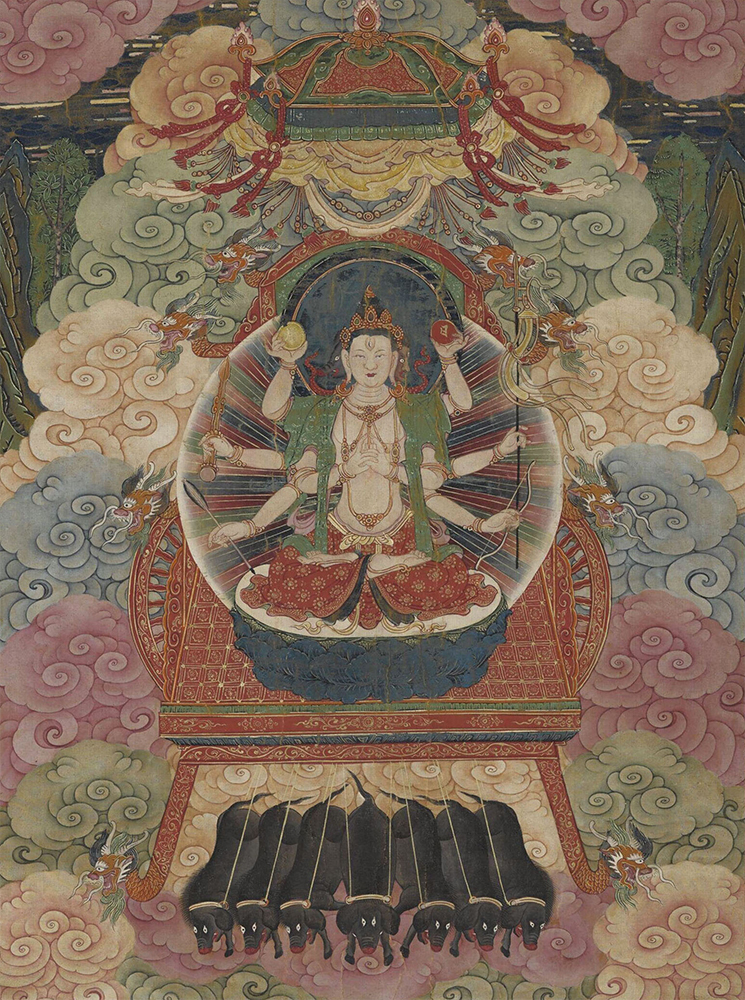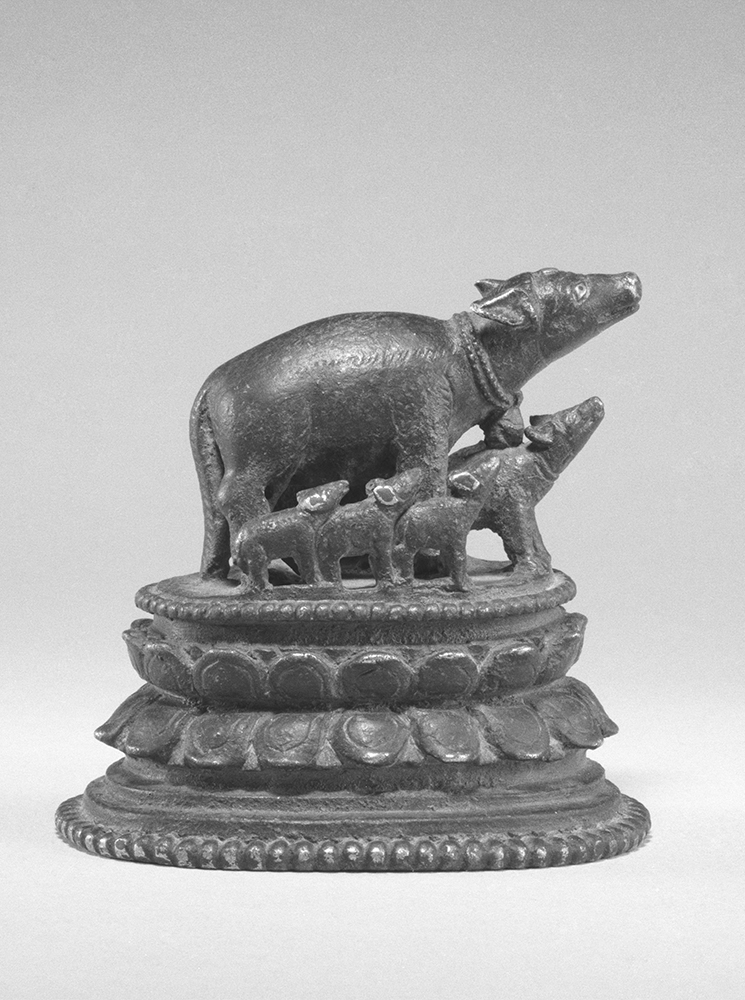ARTICLE
Marichi
While her early, two-armed attendant form is known as Ashokakanta, meaning ‘the maiden of the ashoka tree’, the six- or eight-armed warrior goddess form constitutes the Kalpoktam Marichi representation. Besides her appearances in these forms in manuscript illustrations, Marichi was also depicted as the Goddess of Dawn from the ninth and tenth centuries in eastern India, with such images found from Ratnagiri and Bodh Gaya as well as other Buddhist sites in Bihar, West Bengal, Odisha and parts of Nepal.
Following the translation of the Sanskrit texts into Tibetan and Chinese from the tenth century onwards, Indian Buddhist figures made their way into Tibetan tantric Buddhism. Marichi began to occupy a place of growing importance here, appearing as the central deity in the Nishpannayogavali mandala where she is surrounded by her female attendants Varttali, Vadali, Varali and Varihamukhi. In light of the influence of the Mahayoga- and yogini tantras in the twelfth century, Marichi acquires her most elaborate form as a terrifying, wrathful deity. Referred to as the Oddiyana Marichi in this form, she has red skin, ten or twelve arms bearing weapons, and a pot belly, resembling other powerful tantric goddesses, Vajravarahi and Parnashavari.
While these tantric manifestations of Marichi were popular, the most prevalent representations are the two-armed Ashokakanta Marichi and the yellow-skinned, multi-armed Kalpoktam Marichi. The Kalpoktam Marichi is seen in thangkas and bronze statues from the twelfth century onwards as a peaceful as well as wrathful deity. Sometimes shown with a stupa adorning her head, she is seen being driven by a chariot of sows or seated on a singular boar. This particular manifestation is also popular in China (in both Buddhism and Taoism) and Japan, as a minor warrior goddess.
As a bodhisattva, Marichi is a symbol of rapid enlightenment, and is sometimes also associated with astrology due to her association with the sun. While she continues to be deified in Tibet, China and Japan, her importance has declined in India and Nepal.
Bibliography
Bautze-Picron, Claudine. “Between Shâkyamuni and Vairocana: Mârîcî, Goddess of Light and Victory.” Silk Road Art and Archaeology 7 (2001): 263–310.
Kim, Jinah. “Emergence of a Buddhist Warrior Goddess and the Historical Development of Tantric Buddhism: The Case of Marichi.” Journal of the Indian Society of Oriental Art 28 (2012): 49–65.
Raheman, M., and Anil Chauhan. “Marichi and Tara Worship in the Eastern Deccan (6th to 12th Centuries A.D.): An Iconographic Study.” Proceedings of the Indian History Congress 53 (1992): 114–18.
Shaw, Miranda. Buddhist Goddesses of India. Princeton: Princeton University Press, 2006: 203–15.











